Three large indentical conducting plates of area A are closely placed parallel to each other as shown (the area A is perpendicular to plane of diagram). The net charge on left. Middle and right plates are respectively. Three infinitely large parallel surface are drawn passing through middle of each plate such that surfaces are perpendicular to plane of diagram as shown. Then pick up the correct option(s).
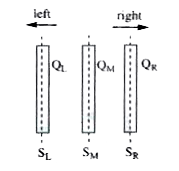 Solution in Telugu
Solution in Telugu
The net charge on the left side of surface is equal to net charge on right side of surface .
The net charge on left side of surface is equal to net charge on right side of surface
The net charge on the left side of surface is equal to net charge on right side of surface .
The net charge on right side of surface is equal to net charge on left side of surfaces .
The correct Answer is:A
Step by step video, text & image solution for Three large indentical conducting plates of area A are closely placed parallel to each other as shown (the area A is perpendicular to plane of diagram). The net charge on left. Middle and right plates are Q_(L) , Q_(M) and Q_(s) respectively. Three infinitely large parallel surface S_(c ), S_(m) and S_(R) are drawn passing through middle of each plate such that surfaces are perpendicular to plane of diagram as shown. Then pick up the correct option(s). by Physics experts to help you in doubts & scoring excellent marks in Class 12 exams.
Topper's Solved these Questions
- BOOK - AAKASH SERIESCHAPTER - ELECTROSTATICSEXERCISE - LECTURE SHEET (EXERCISE - III) (LEVEL - II (ADVANCED) MORE THAN ONE CORRECT ANSWER TYPE QUESTIONS)4videos
ELECTROSTATICS
- BOOK - AAKASH SERIESCHAPTER - ELECTROSTATICSEXERCISE - LECTURE SHEET (EXERCISE - III) (LEVEL - II (ADVANCED) LINKED COMPREHENSION TYPE QUESTIONS)1videos
ELECTROSTATICS
- BOOK - AAKASH SERIESCHAPTER - ELECTROSTATICSEXERCISE - LECTURE SHEET (EXERCISE - III) (LEVEL - I (MAIN) STRAIGHT OBJECTIVE TYPE QUESTIONS)6videos
ELECTROSTATICS
- BOOK - AAKASH SERIESCHAPTER - ELECTROMAGNETICSEXERCISE - ADDITIONAL EXERCISE6videos
ELECTROMAGNETICS
- BOOK - AAKASH SERIESCHAPTER - ELEMENTS OF VECTORSEXERCISE - QUESTIONS FOR DESCRIPTIVE ANSWERS9videos
ELEMENTS OF VECTORS
Similar Questions
An electric field converges at the origin whose magnitude is given by the expression E = 100 r N/C, where r is the distance measured from the origin.
04:10View SolutionTwo conducting plates X and Y, each having large surface aera A (on one side), are placed parallel to each other as show in figure.

Find the surface charge density at the inner surface of the plate X.View SolutionA cylinder of radis R and length L is placed in a uniform electric field E parallel to the cylinder axis. The total flux from the curved surface of the cylinder is given by
View SolutionWhat is the radius of the path of an electron (mass 9 × 10-31 kg and charge 1.6×x10–19 C) moving at a speed of 3×x107 m/s in a magnetic field of 6x×10−4 T perpendicular to it? What is its frequency? Calculate its energy in keV. (1eV=1.6×10−19J)
02:03View SolutionFind the components of vector ¯¯¯A=2ˆi+3ˆj along the directions of ˆi+ˆjandˆi−ˆj
02:00View SolutionThree identical conducting plain parallel plates, each of area A are held with equal (/ between successive surfaces. Charges 2Q , and 3Q are placed on them. Neglecting edge effects, find the Charge on the left face of the middle plate
03:37View SolutionTwo conducting plates M and N, each having large surface area A (on one side), are placed parallel to each other in figure. The plate M is given charge Q_1 and N, charge Q_2(ltQ_1) . Then
03:13View SolutionThree large identical conducting plates of area A are closely placed parallel to each other as shown (the area A is perpendicular to plane of diagram). The net charge on left, middle and right plates are QL,QM and QR respectively. Three infinitely large parallel surface SL,SM and SR are drawn passing through middle of each plate such that surface are perpendicular to plane of diagram as shown. Then pick up the correct option(s).
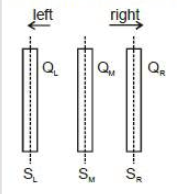 05:40View Solution
05:40View SolutionTwo large , parallel conducting plates X and Y , kept close to each other , are given Q1 and Q2(Q1>Q2). The four surfaces of the plates are A,B,C and D , as shown
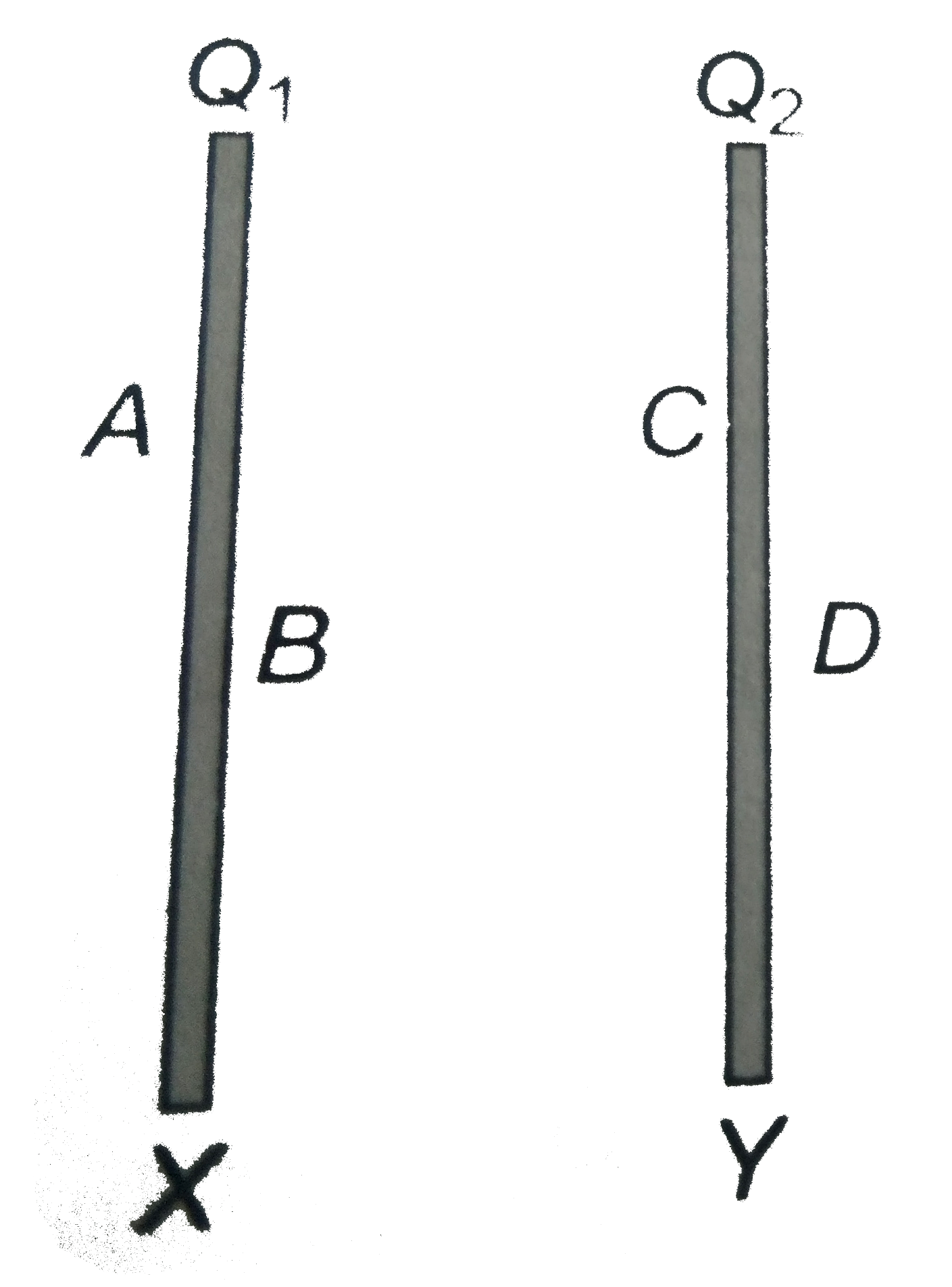
(i) The charge on A is 12(Q1+Q2)
(ii) The charge on B is 12(Q1−Q2)
(iii) The charge on C is 12(Q2−Q1)
(iv) The charge on D is 12(Q1+Q2)02:36View SolutionConsider a parallel plate capaciter having plates of unequal area. When a battery supplies +Q_(1) and -Q_(2) charges to two plates.
10:19View Solution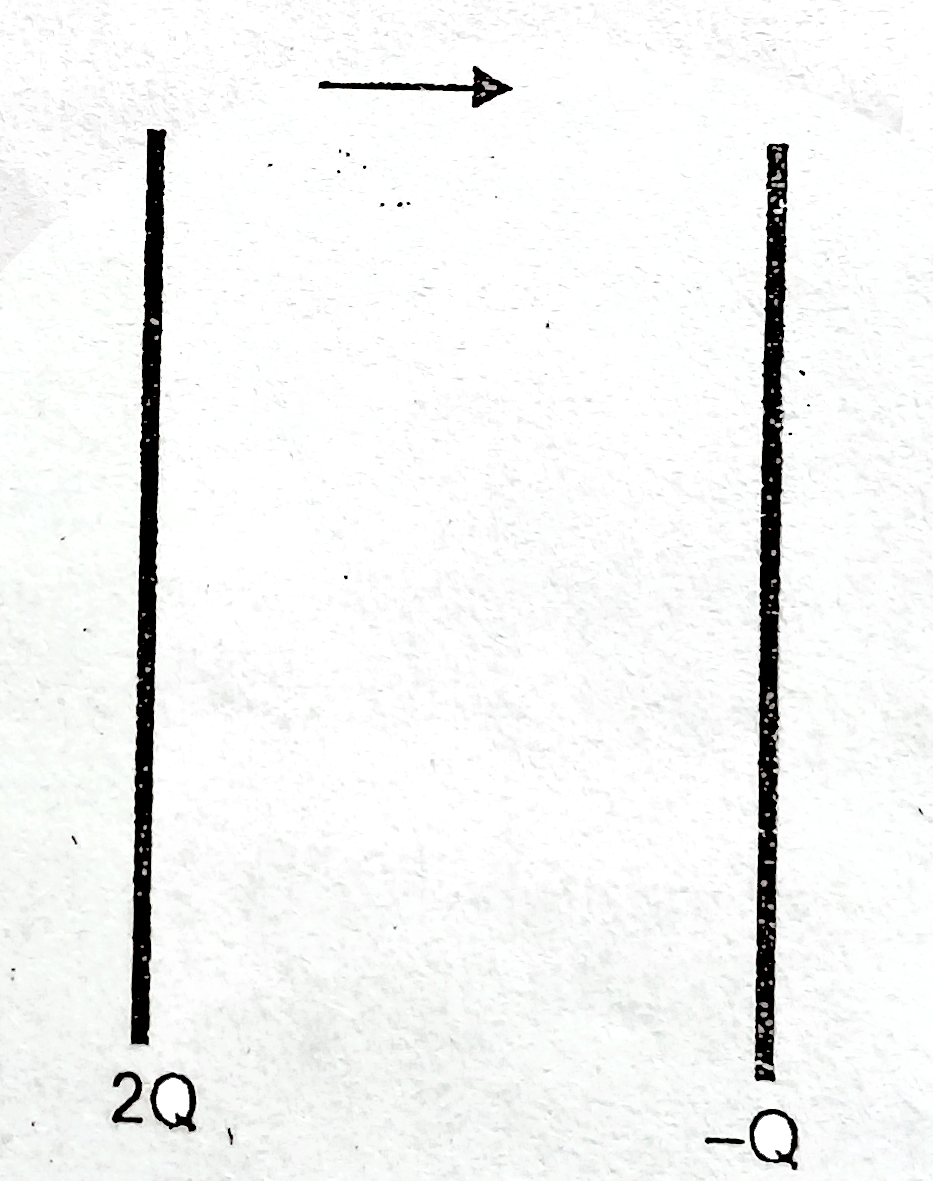
Two large parallel conducting plates of net charge 2Q and −Q are placed in a uniform external electric field Q2Aε0 prependicular to plates as shown. The surface area of each plates is A. The charge on the left surface of the left plate and right surface of the right plate are respectively.03:11View SolutionThree large plates A, B and C are placed parallel to each other and charges are given as shown. The charge that appears on the left surface of plate B is
View SolutionThree identical metal plates with large surface areas are kept parallel to each other as shown. The left most is given a charge Q, the right most part a charge −2Q and the middle one remains neutral. Then which is wrong-
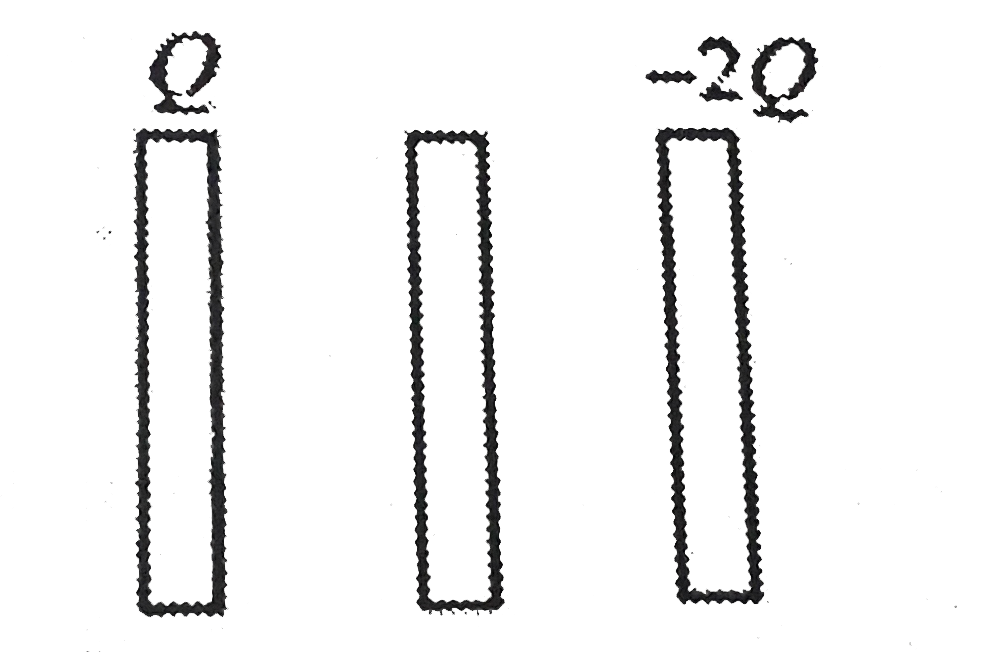 01:57View Solution
01:57View SolutionIn an isolated parallel plate capacitor of capacitance C the four surfaces have charges Q1,Q2,Q3 and Q4 as shown in the figure. The potential difference between the plates is :
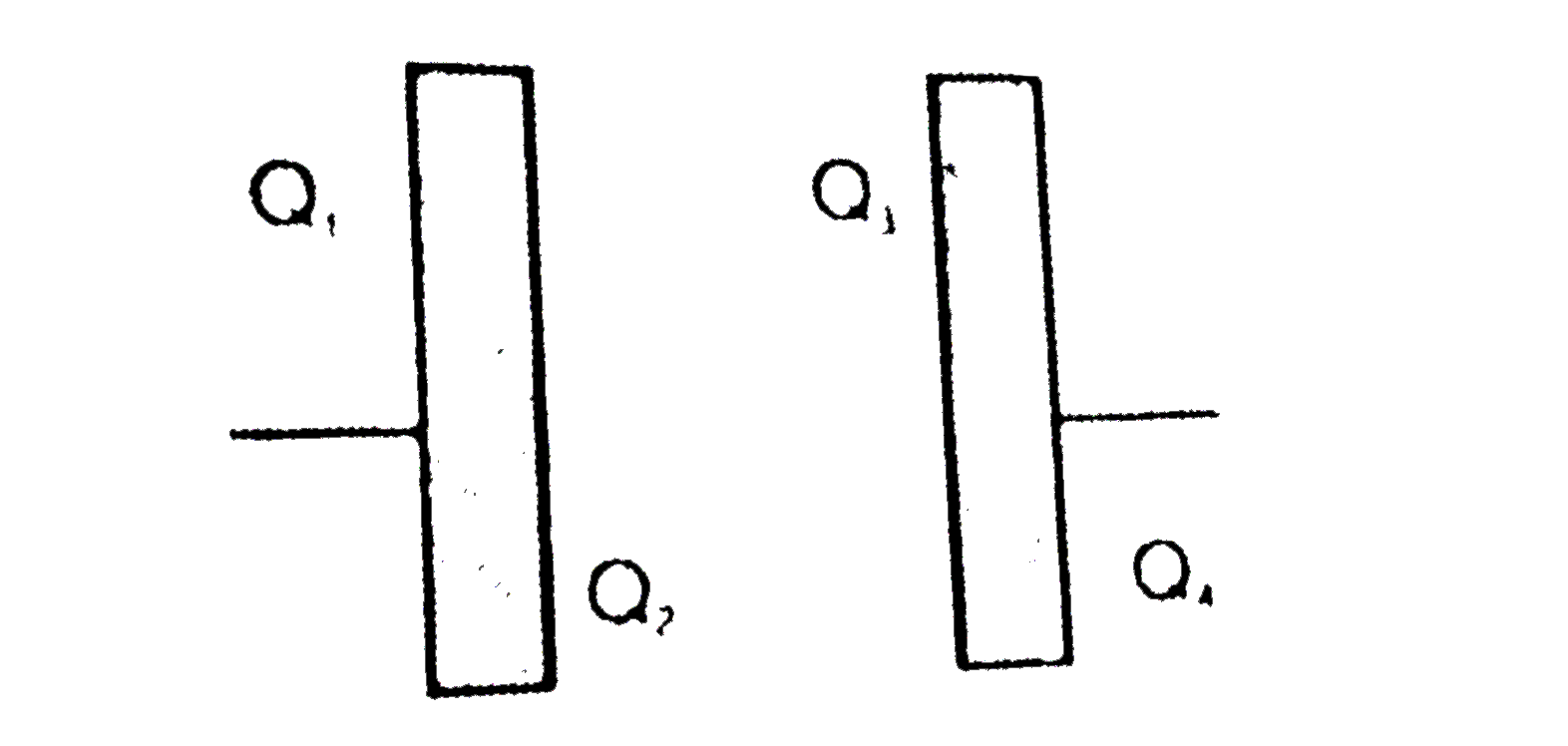 03:59View Solution
03:59View Solutionएक-दूसरे के समांतर व्यस्थित दो विशाल सुचालक प्लेट X तथा Y को क्रमशः Q1 और Q2 आवेश दिया गया है। चित्र 2.6 में A, B, C, D द्वारा प्रदर्शित है।
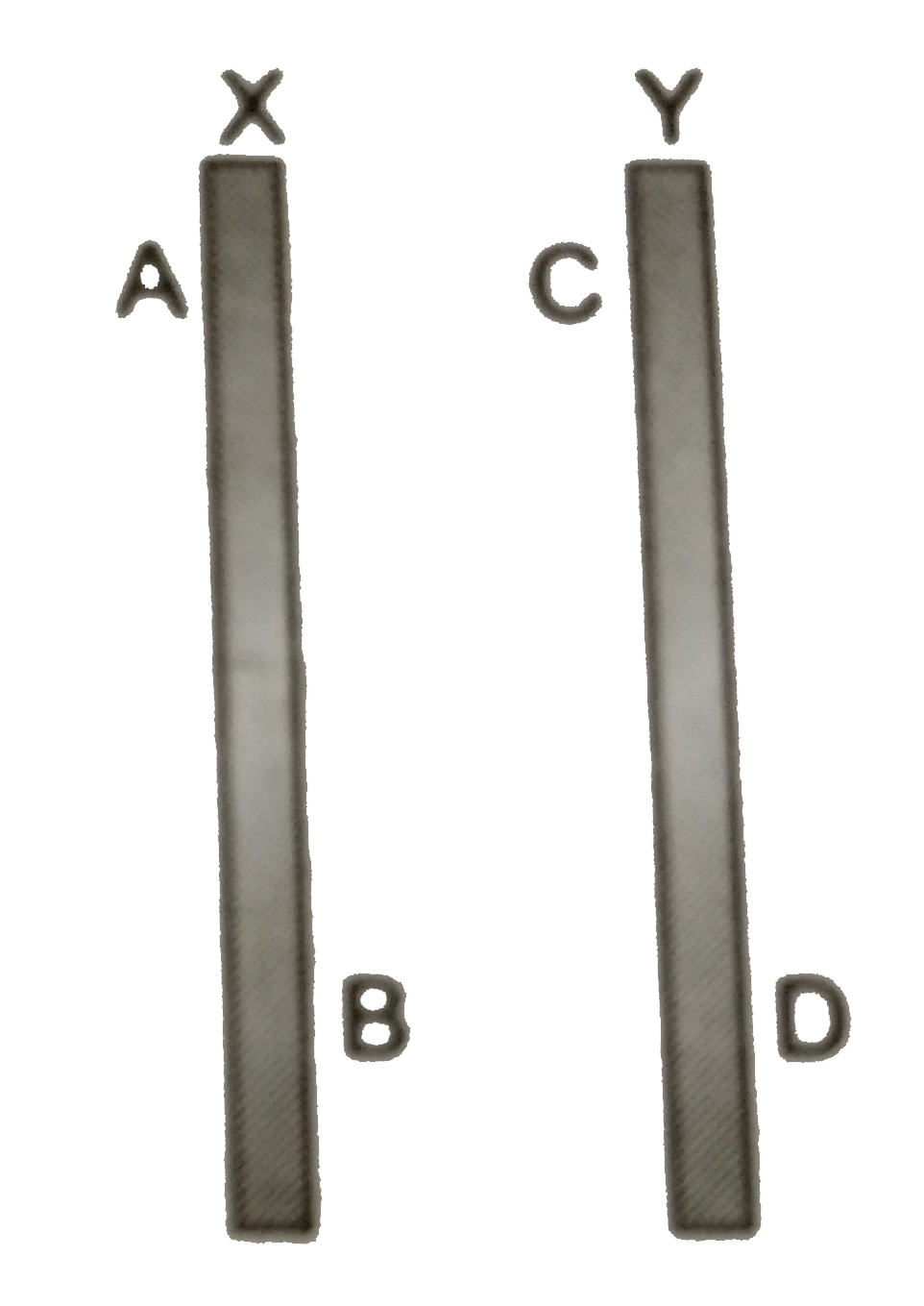 03:36View Solution
03:36View Solution

